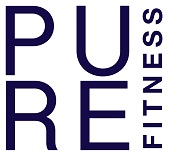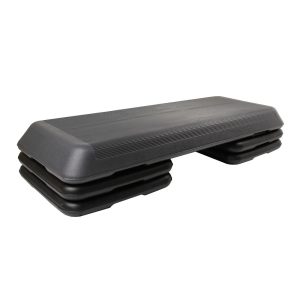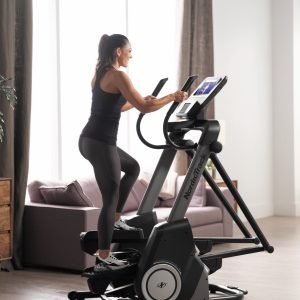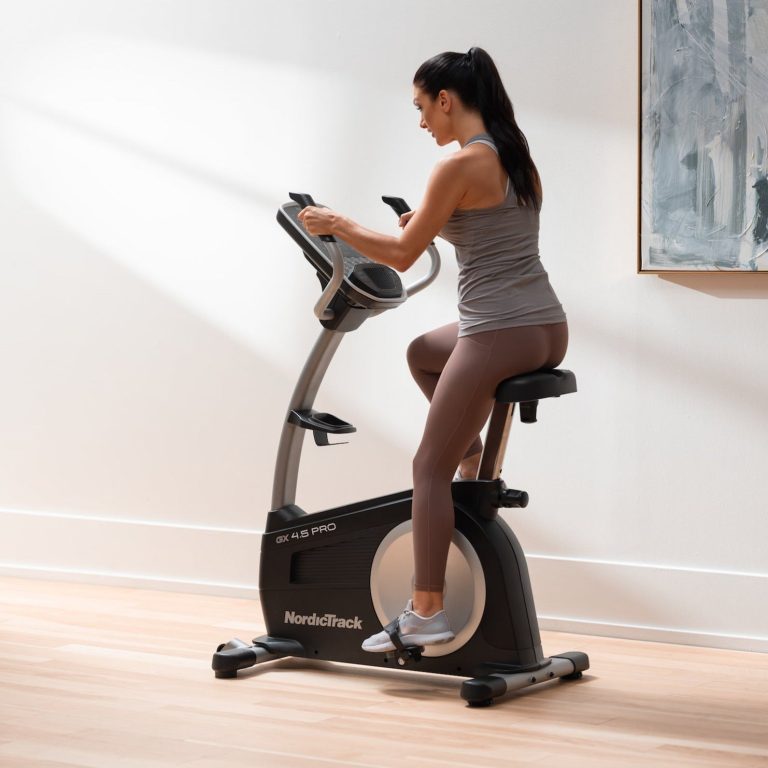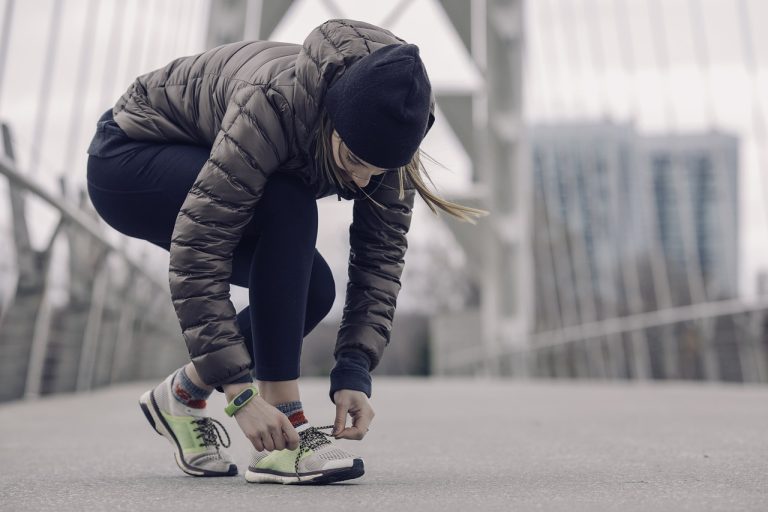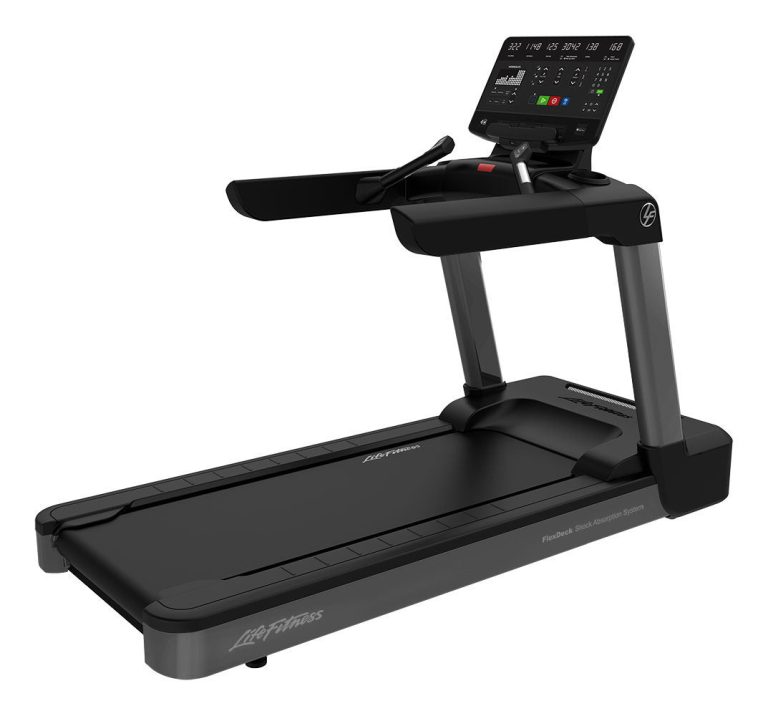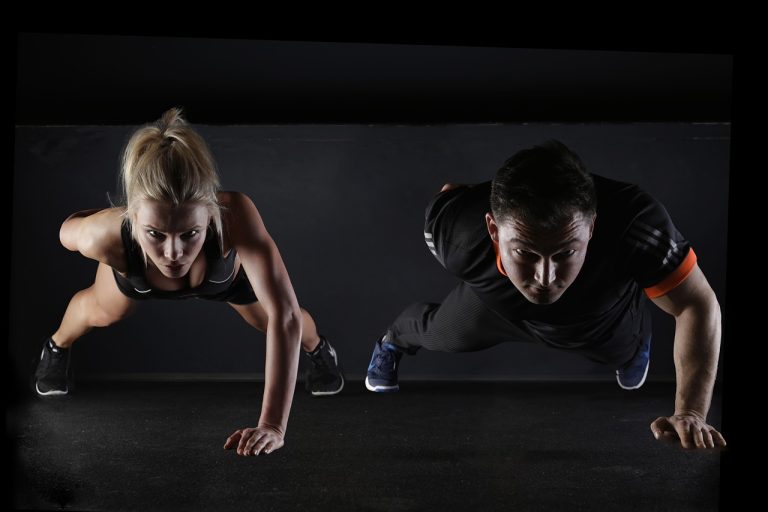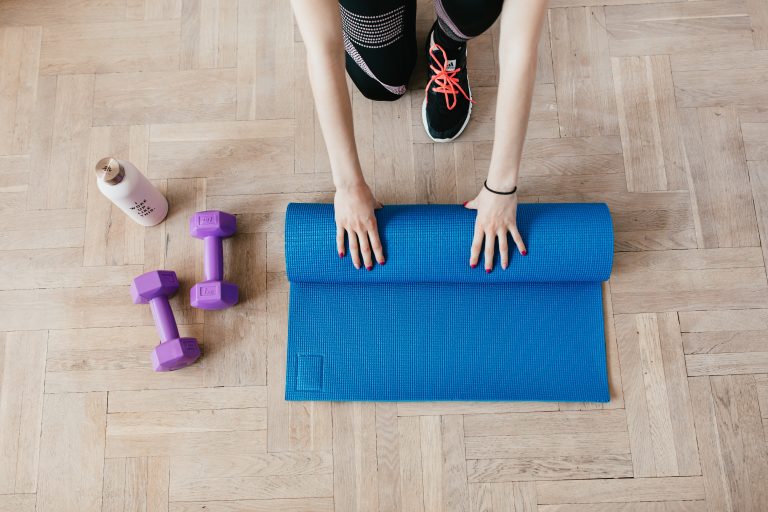Have you ever wondered if a step trainer would be a valuable addition to your home gym? With its compact design and versatile functionality, a step trainer can provide an effective cardiovascular workout right in the comfort of your own home. Not only does it mimic the motion of climbing stairs, but it also offers various intensity levels to suit individuals of different fitness levels. Whether you’re aiming to improve your stamina, burn calories, or tone your lower body, a step trainer might just be the perfect companion for your home workouts.
Table of Contents
ToggleBenefits of a Step Trainer
Improved cardiovascular health
Using a step trainer in your home gym can greatly contribute to improving your cardiovascular health. When you engage in step exercises, you continuously elevate your heart rate, thereby increasing blood circulation throughout your body. This sustained cardio activity helps to strengthen your heart and lungs, leading to improved overall cardiovascular fitness.
Effective calorie burn
If you’re looking to burn calories and achieve your fitness goals, a step trainer can be a fantastic addition to your home gym routine. Step exercises involve both lower body and upper body movements, which require significant energy expenditure. By stepping up and down on the trainer, you engage multiple muscle groups and burn a substantial amount of calories in the process.
Strengthening lower body muscles
A step trainer specifically targets and strengthens the muscles in your lower body. The repetitive step motion engages your glutes, quadriceps, hamstrings, and calves, helping to tone and build strength in these areas. By incorporating step exercises into your regular workout routine, you can achieve well-defined lower body muscles and enhance your overall muscular endurance.
Low impact on joints
One major advantage of using a step trainer is that it provides a low-impact workout, which is particularly beneficial for individuals with joint issues or those recovering from injuries. Unlike high-impact activities like running or jumping, stepping on a trainer significantly reduces the stress on your joints, allowing you to exercise without exacerbating any existing joint pain or discomfort.
Versatile workout options
A step trainer offers a multitude of workout options, making it a versatile piece of fitness equipment for your home gym. You can vary the intensity and duration of your step exercises, add resistance bands for an additional challenge, or even incorporate upper body movements using dumbbells. This versatility allows you to customize your workouts based on your fitness goals and preferences, ensuring a well-rounded and engaging fitness routine.
Considerations for Home Gym
Space requirements
Before investing in a step trainer, it’s crucial to consider the space requirements of your home gym. Step trainers come in various sizes, from compact mini steppers to larger stair steppers. Ensure that you have sufficient space to accommodate the trainer and allow for comfortable movement during your workouts. It’s important to have enough clearance around the trainer to prevent any accidents or injuries.
Budget
Another factor to consider when choosing a step trainer for your home gym is your budget. Prices of step trainers can vary significantly depending on the type, brand, and features. Determine how much you are willing to spend and research different models within your budget range. It’s essential to strike a balance between quality and affordability to ensure that you are investing in a durable and reliable piece of equipment.
Noise levels
If you live in an apartment or have neighbors in close proximity, noise levels may be a concern when using a step trainer. Some models may produce more noise than others, especially those with mechanical parts or hydraulic systems. Consider opting for trainers with noise-reducing features or using noise-absorbing mats underneath the equipment to minimize the impact on your living environment.
Weight and portability
Portability is an important consideration if you have limited space or intend to move your step trainer around within your home gym. Mini steppers and twist steppers are generally lightweight and compact, making them easy to transport and store. On the other hand, traditional step trainers and stair steppers may be heavier and more cumbersome. Evaluate your needs and priorities to determine the ideal weight and portability features for your step trainer.
Extra features
While the primary function of a step trainer is to provide a stepping platform for exercise, some models offer additional features that can enhance your workouts. These may include built-in resistance levels, adjustable step height, LCD screens to track time and calories burned, or even pre-programmed workout routines. Consider the extra features that align with your specific fitness goals and preferences to maximize the functionality of your step trainer.
Types of Step Trainers
Traditional Step Trainer
A traditional step trainer resembles a small staircase with adjustable step height. It is a sturdy and durable option that provides a stable platform for step exercises. The adjustable step height allows you to tailor the intensity of your workouts, making it suitable for users of different fitness levels. This type of step trainer is ideal for individuals who prefer a classic and reliable piece of equipment.
Mini Stepper
A mini stepper is a compact and lightweight version of a step trainer. It typically consists of two independent pedals and does not have a central platform like traditional step trainers. Despite its smaller size, a mini stepper still provides an effective cardiovascular workout. This type of step trainer is perfect for those with limited space or who require a portable option that can be easily stored away.
Twist Stepper
A twist stepper, as the name implies, incorporates a twisting motion along with the step movements. The twisting action engages your obliques and core muscles, providing an additional challenge to your workouts. This type of step trainer is excellent for individuals who want to target their abs and love the idea of a dynamic and engaging exercise routine.
Aerobic Stepper
An aerobic stepper typically features a large platform with adjustable risers. Unlike traditional step trainers, an aerobic stepper is often used in conjunction with workout videos or classes, incorporating choreographed routines that involve stepping on and off the platform. It offers a fun and challenging way to burn calories, improve coordination, and enhance cardiovascular fitness.
Stair Stepper
A stair stepper closely mimics the motion of climbing stairs. It usually comes with two handles for added stability and balance during workouts. This type of step trainer offers a full-body workout, engaging both the upper and lower body. Stair steppers often come with adjustable resistance levels, allowing you to customize the intensity of your workouts. If you’re looking for a challenging and effective workout, a stair stepper might be the perfect choice for you.
Choosing the Right Step Trainer
Fitness goals and preferences
When selecting a step trainer for your home gym, it’s essential to consider your fitness goals and preferences. If you enjoy challenging workouts and want to target specific muscle groups, a twist stepper or stair stepper may be more suitable. Alternatively, if you prefer a compact and versatile option, a mini stepper or traditional step trainer might be a better fit. Understanding your fitness goals and personal preferences will help you choose the right step trainer for your needs.
Available space in the home gym
The amount of available space in your home gym is a critical factor in choosing the right step trainer. Measure the dimensions of the area where you plan to place the equipment and compare them to the dimensions of the step trainers you are considering. Ensure that there is enough space for the trainer to fit comfortably and allow for adequate movement during your workouts. Opting for a more compact option, such as a mini stepper, may be necessary if space is limited.
Budget constraints
Your budget is another important consideration when purchasing a step trainer. Determine how much you are willing to spend and research different models within your price range. It’s important to strike a balance between quality and affordability to ensure that you are investing in a durable and reliable piece of equipment. Look for step trainers that offer the features you need while still fitting within your budget constraints.
Quality and durability
When investing in a step trainer, it’s crucial to prioritize quality and durability. You want a trainer that can withstand regular use and last for an extended period. Read reviews and gather feedback on different models to assess their build quality and overall durability. Look for step trainers made of sturdy materials that provide stability and support during workouts. Investing in a high-quality step trainer will ensure that you can enjoy its benefits for years to come.
User weight capacity
Consider the user weight capacity of the step trainers you are evaluating. Different models can accommodate varying weight limits, so it’s important to choose one that can support your weight or the weight of anyone who will be using the trainer. Ensure that the weight capacity aligns with your needs to avoid any stability or safety issues. Exceeding the recommended weight limit can pose risks during your workouts, so it’s important to select a step trainer that can handle your weight comfortably.
Effective Step Trainer Workouts
Basic step exercises
Basic step exercises form the foundation of any step trainer workout routine. These include simple step-ups and step-downs, focusing on alternating legs. Start with a comfortable step height and gradually increase the intensity as your fitness level improves. Basic step exercises effectively engage your lower body muscles and improve cardiovascular endurance.
Interval training
Interval training involves alternating between high-intensity bursts of activity and periods of rest or lower intensity. Incorporating intervals into your step trainer workouts can significantly increase calorie burn and overall cardiovascular fitness. For example, you can do a set of fast-paced step-ups followed by a period of slower step movements or a complete rest. Repeat this cycle multiple times for an intense and effective workout.
High-intensity workouts
If you enjoy challenging workouts and want to push your limits, high-intensity step trainer workouts are a great option. These workouts involve rapid and intense step movements, incorporating variations like jump or lunge steps. High-intensity workouts elevate your heart rate quickly, resulting in maximum calorie burn and improved cardiovascular fitness. Ensure that you have good form and gradually increase the intensity to prevent injury or strain.
Upper body integration
Many step trainers allow for the integration of upper body movements, making it a full-body workout. Incorporate exercises like bicep curls, shoulder presses, or lateral raises while stepping to engage your upper body muscles. This combination of lower body and upper body movements provides a comprehensive workout, targeting multiple muscle groups simultaneously and maximizing your overall fitness gains.
Balance and coordination exercises
Step trainers can also be used to improve balance and coordination. Engage your core and focus on steady and controlled step movements. You can add variations like single-leg steps or step taps to challenge your balance further. These exercises help to strengthen your core muscles, improve stability, and enhance overall coordination, which are essential for functional fitness and injury prevention.
Step Trainer Safety Tips
Warm-up and cool-down routines
Before starting any step trainer workout, it’s crucial to warm up your muscles and prepare your body for exercise. Engage in light stretching or dynamic movements to increase blood flow and warm up your joints. After your workout, incorporate a cool-down routine to gradually bring your heart rate back to normal and stretch your muscles to prevent post-exercise soreness.
Proper footwear
Wearing appropriate footwear is essential when using a step trainer to ensure comfort and prevent injuries. Opt for athletic shoes with good cushioning and support. They should provide stability and grip to prevent slipping or sliding during your workouts. Avoid using shoes with thick soles or high heels, as they can affect your balance and stability on the step trainer.
Adjusting resistance and intensity
When using a step trainer, it’s crucial to listen to your body and adjust the resistance and intensity of your workouts accordingly. Start with a comfortable step height and resistance level, and gradually increase them as your fitness level improves. Avoid pushing yourself too hard too soon, as this can lead to muscle strain or excessive fatigue. Gradual progression is key to safe and effective step trainer workouts.
Maintaining good posture
Maintaining good posture throughout your step trainer workouts is essential for optimal results and injury prevention. Keep your shoulders back, chest lifted, and core engaged. Avoid slouching or leaning on the handles, as this can compromise your form and reduce the effectiveness of the exercises. Proper posture ensures that you engage the correct muscles and maintain stability and balance on the step trainer.
Listening to your body
The most important safety tip when using a step trainer is to listen to your body. Pay attention to any discomfort, pain, or fatigue during your workouts. If something doesn’t feel right, stop and assess the situation. Pushing through pain or ignoring your body’s signals can lead to injuries. Remember that rest and recovery are crucial for allowing your body to heal and adapt to the physical demands of exercise.
Additional Home Gym Equipment
Dumbbells
In addition to a step trainer, incorporating dumbbells into your home gym setup can add variety and resistance to your workouts. Dumbbells allow you to target specific muscle groups in your upper body, including your arms, shoulders, and chest. They are versatile and can be used for a wide range of exercises, such as bicep curls, shoulder presses, and chest presses.
Resistance bands
Resistance bands are an excellent addition to your home gym, providing a portable and cost-effective way to increase resistance during your workouts. They come in various strengths, allowing you to customize the intensity of your exercises. Resistance bands can be used to target both your upper body and lower body muscles, making them a versatile and convenient option for strength training.
Exercise mat
An exercise mat is essential for providing cushioning and support during floor exercises or stretching routines. It creates a comfortable surface and helps to reduce the impact on your joints. An exercise mat is particularly beneficial when performing exercises like push-ups, planks, or abdominal workouts. Look for a mat that is thick enough to provide adequate padding and has a non-slip surface for added safety.
Jump rope
A jump rope is a versatile and effective cardiovascular exercise tool that can be used in conjunction with a step trainer. Jumping rope not only elevates your heart rate but also improves coordination, agility, and muscular endurance. It’s a compact and portable equipment option that can be easily stored and used for a quick and efficient workout.
Foam roller
A foam roller is a great addition to your home gym for post-workout recovery and muscle relaxation. Foam rolling can help release tension, reduce muscle soreness, and improve flexibility. It’s particularly beneficial for the muscles in your legs and glutes, which are heavily engaged during step trainer workouts. Incorporating foam rolling into your routine can promote faster recovery and prevent muscle imbalances.
Setting Up a Home Gym
Choosing the right space
When setting up your home gym, it’s important to choose the right space that is dedicated solely to your workouts. Consider a spare room, basement, or a section of a larger room that is free from distractions and has enough space to accommodate your equipment. Ensure that the chosen space has proper ventilation and lighting to create a comfortable workout environment.
Equipment placement and organization
Once you have chosen the ideal space for your home gym, it’s time to plan the placement and organization of your equipment. Optimize the layout to maximize functionality and ensure safe and efficient movement. Place your step trainer in a central location, with sufficient space around it for easy access and movement. Organize your other equipment, such as dumbbells or resistance bands, within arm’s reach of the step trainer.
Creating a motivational environment
To maintain motivation and consistency in your home workouts, it’s essential to create a motivational environment in your home gym. Hang motivational posters or quotes on the walls, play upbeat music, or install a small television for entertainment during your workouts. Add personal touches like plants or artwork to make the space feel inviting and inspiring. A positive and motivating environment can significantly impact your workout experience.
Ventilation and lighting
Proper ventilation and lighting are important considerations when setting up your home gym. Ensure that the chosen space has adequate airflow to prevent overheating and to circulate fresh air. If possible, choose a space with natural light or install sufficient overhead lighting to create a well-lit environment. Good ventilation and lighting can enhance your comfort, focus, and overall workout experience.
Maintaining Motivation in Home Workouts
Setting clear goals
To stay motivated in your home workouts, it’s important to set clear and achievable goals. Whether it’s improving cardiovascular fitness, building strength, or losing weight, having specific goals helps to keep you focused and driven. Break down your goals into smaller milestones and celebrate your progress along the way. Regularly reassess and adjust your goals to keep them challenging and meaningful.
Creating a workout schedule
Establishing a workout schedule can help you stay consistent and motivated in your home workouts. Set aside dedicated time slots throughout the week for your exercise sessions and treat them as non-negotiable appointments with yourself. Consider your personal preferences and energy levels when determining the best time of day for your workouts. Creating a routine can make exercise a habit and eliminate decision fatigue.
Variety in workouts
Incorporating variety into your home workouts is key to maintaining motivation. Perform a mix of step trainer exercises, strength training, flexibility exercises, and cardiovascular activities to keep your routine interesting and engaging. Explore online workout videos, virtual classes, or workout apps that offer a wide range of exercises and routines to prevent boredom and challenge different muscle groups.
Tracking progress
Tracking your progress is crucial for staying motivated and recognizing the improvements you are making. Keep a workout journal, use a fitness app, or invest in a fitness tracker to monitor your steps, calorie burn, and other relevant metrics. Celebrate milestones and improvements, whether it’s increasing the step height on your trainer or running for longer durations. Seeing progress can boost your confidence and motivation to continue pushing forward.
Incorporating music or podcasts
Listening to music or podcasts can significantly enhance your motivation during home workouts. Create energizing playlists with your favorite songs that get you in the mood to move. Podcasts and audiobooks can be a great distraction and source of entertainment during longer workouts. The right audio companion can keep you engaged, motivated, and even help to pass the time during your exercise sessions.
Conclusion
In conclusion, a step trainer is an excellent addition to any home gym due to its numerous benefits. It improves cardiovascular health, provides effective calorie burn, strengthens lower body muscles, and offers a low-impact workout option for individuals with joint issues. With versatile workout options and various step trainer types available, you can find the right fit based on your fitness goals, preferences, and available space. Ensure that you consider safety tips, maintain motivation, and potentially incorporate additional equipment to create a well-rounded and engaging home gym experience. By investing in a step trainer and creating a suitable home gym setup, you can take control of your fitness journey and enjoy the convenience and comfort of exercising in your own space.
